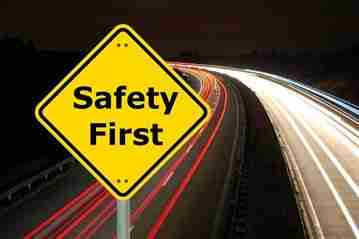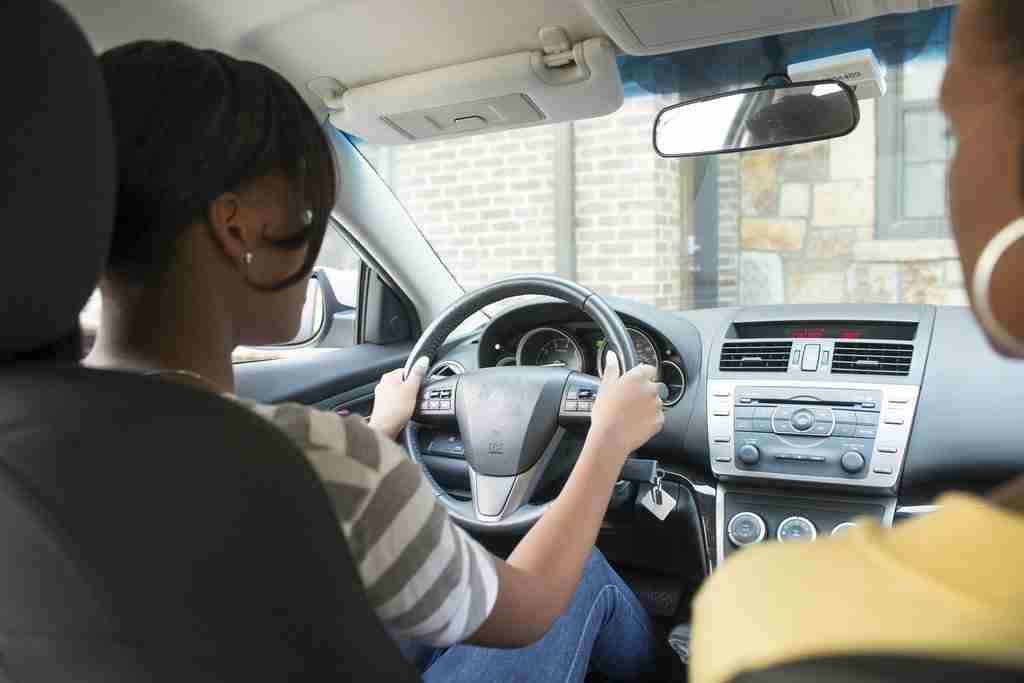 When you become a parent, you want to do everything you can to ensure the safety of your children. You teach them what you can about the world and hope that they grow up to be happy, responsible adults. And they will, in turn, learn that responsibility from you.
When you become a parent, you want to do everything you can to ensure the safety of your children. You teach them what you can about the world and hope that they grow up to be happy, responsible adults. And they will, in turn, learn that responsibility from you.
One of the first things that you are responsible for after having a child is road safety. You will be driving your child from the hospital and taking them with you wherever you go for the next 10 to 12 years, so as parents, you need to know how to ensure that your child is safe on the road at all times. Then, as they get older, you will be responsible for teaching them how to be safe in the cars they drive on their own. There are many things you need to know: which car seat to use, when it’s okay not to use one and how to talk to your children about driving safety.
Here’s a comprehensive guide for parents so they know how to keep their children safe on the road.
NEWBORNS AND TODDLERS
As a general rule, you will want to have your child ride in a car seat or booster seat until they are at least seven years old, and even longer if they are small. Whichever type of seat they are in, always read the manufacturer’s warnings and recommendations to ensure that you and your child are using the seat correctly. There are as many as 179,000 car seat-related injuries to children every year, so adherence to proper installation is a must. They will have different recommendations, depending on your child’s size and weight.
Car Seats
Car seats are designed to keep small children safe while driving. They can be forward- or backward-facing to meet the needs of the parents. Car seats have gotten much safer since the early 2000s due to governmental regulations and all vehicles made after 2002 are required to include at least two anchor points for car seats in the back of all vehicles for easy securement.
Studies have shown that the center back seat, facing backward is the safest spot for a child in a car seat. To make sure your car seat is up to regulations, never purchase a used model: always buy a new one so you know for a fact that the seat has been inspected and approved for use.
Choosing a Car Seat
Choosing the correct car seat can be a challenge, especially if it’s the first time purchasing one. There are a few general guidelines that you can follow to make sure you get the car seat that’s right for you and your child:
- Read Your Owner’s Manual — a lot of the information on car seats that you will need can be found in your owner’s manual. It will tell you how you can anchor your car seat so you will have a good idea of the design you will need to buy.
- Always Read the Manufacturer’s Recommendations — the car seat manufacturer is required by law to specify the height and weight of a child that each seat is approved for. Do not buy one that your child has exceeded.
- Pay Attention to the Size of Your Backseat — there are many different designs of car seats, so you need to make sure the one you choose will fit properly onto your back seat: a car seat with a large base may not fit properly on a small back seat.
- Choose a Seat That’s Easy to Install — you may be taking the car seat in and out of your car to clean it or to make room for the other needs you use your car for. Having to struggle with car seat installation will just frustrate you.
- Register Your Car Seat — by registering your car seat, you will be notified of any future recalls so you can ensure the safety of your child for years to come.
Different Age Groups
As long as your child falls into the manufacturer’s weight and height recommendations, you can keep them in a car seat or booster seat for as long as you want. There is no harm in an older child riding in a car seat if they are within the specifications. This is an adjustment that you can make as a parent as you see fit.
All 50 states, as well as the District of Columbia, have car seat laws for children, so make sure that you know yours. Some are vastly different than others.
There are some rules that pertain to the safety of different age groups as well. Here are the important ones that you should always follow.
Birth to Twelve Months
Children under the age of one year should always be seated in a rear-facing car seat in the back seat of the vehicle. Children this small can be hurt by a front seat airbag even when facing backward, so never place them in the front seat.
There are typically two choices for car seats that hold children this small: infant seats and All-In-One seats, sometimes called “convertible” seats. The choice is yours, which you can base on need and budget — both will protect your child — but All-In-Ones can be used for longer periods because you can adjust them as your child grows. Also, infant car seats are designed to strap in backwards only, so you will need to buy a new car seat as your child grows for that reason as well.
It is very important that you don’t change car seats until your child has neared the maximum requirements of the car seat. Car seats are designed to protect children of specific heights and weights, not necessarily age, so if your child is a little small, you should keep them the rear-facing.
Ages One to Seven
While it’s recommended that you keep your child in a rear-facing seat for as long as you can, you can start thinking about facing them forward after their second birthday. They will be getting too large for an infant seat if you choose that style, and you will be able to adjust an All-In-One which is capable of facing both backward and forward.
If you want to keep them facing backward, you can usually do so until they are about seven years old. After that, it may become more dangerous for them to face backward instead of forward. The will be getting too large to fit comfortable in a car seat by that age anyway, and facing them backward when their legs are too long can cause injuries in the event of a crash.
If you choose to allow your child to face forward, there are a few things you need to know. First, if they are over 22 pounds, then it’s probably safe to turn the car seat forward. Again, this is a choice you must make as a parent. Secondly, make sure that the harness straps of the car seat are at or above your child’s shoulders. If the straps are too low, then you need to purchase another car seat because your child will not be properly protected if something happens.
Finally, as your child ages, they may not like the idea of riding in a car seat, whether it’s forward or backward. This can cause some stress for parents, as they want their children to be comfortable in the car. Your child may scream or throw a tantrum, but for the safety of your child, you cannot give in. Properly installed car seats are the best way to protect your child from injury in the car.
Once your child grows to the maximum height and weight requirements of the car seats (usually 40 pounds), then it’s time for you to move them into a booster seat.
For information on finding and installing the right car seat for your child see our guide here.
YOUNG CHILDREN
Once your child has grown out of their car seat, you may think that it would be okay to just let them use the seat belts in the backseat of your vehicle. Unfortunately, this is not the case. Many times, your child is still too small for the seatbelts to work properly. This can lead to injuries, especially when the shoulder strap is too high on them, where it can hurt their neck, or when they decide to put the shoulder strap behind them and just use the lap belt.
The truth is that continuing to use a safety seat such as a booster until your child is at least 4’9” will decrease the chances of injury by 45%. Here’s everything you need to know about choosing the right booster seat and using it correctly until your child is old enough to go without one.
Booster Seats
 Booster seats are designed to protect children who are too large for a car seat, but not yet tall enough for regular seat belt use. You will use the car’s seatbelts to secure your child, but the booster seat will lift them up so the shoulder strap and lap belt fit properly to ensure their safety.
Booster seats are designed to protect children who are too large for a car seat, but not yet tall enough for regular seat belt use. You will use the car’s seatbelts to secure your child, but the booster seat will lift them up so the shoulder strap and lap belt fit properly to ensure their safety.
Booster seats are typically available in two models: high-backed and backless. The high-backed models are the safest for vehicles with a low back seat and backless models work for vehicle seats that naturally provide full support to your child’s head and back.
If you are unsure how to install a car seat or a booster seat properly, you can find a safety seat inspection station near you. They will be able to help you with any questions you have as well as so you step-by-step how to properly install both types of car seats.
How to Choose a Booster Seat
As with a car seat, there are a few things to think about when you are buying a booster seat:
- Is Your Child Ready? — just because your child has reached a certain age where you feel they should be in a booster seat doesn’t mean they are ready. If they are still within the maximum requirements of a car seat, feel free to keep them in it.
- Choose Backless or High-Backed — the two types of booster seats are very different. High-backed boosters help keep the shoulder strap in place because they usually have a routing guide. Backless boosters are usually cheaper and they offer better lap belt positioning. Ultimately, the backs of your vehicle’s seats may be the determining factor, as lower seats will require you to purchase a high-backed model.
- Make Sure Your Child is Comfortable — if you can, try a floor model with your child before buying a booster. They will be able to give some feedback as to the comfort and fit of the model, allowing you to make a better decision. The goal of a booster is to raise your child up so they can use the car’s seatbelts properly, so you need to make sure that the lap belt fits snugly across their upper thighs (not their stomach) and the should strap should fit across the middle of their shoulder rather than near their neck.
Using a Booster Seat
Children are ready for a booster seat typically between the ages of four and seven. Again, make sure that they’ve outgrown their car seat before transitioning them to a booster seat, otherwise, you risk injury. Just because other parents have transitioned their children to a booster doesn’t necessarily mean your child is ready.
As with car seats, a booster seat should always be placed in the back seat. Unlike car seats, however, you will probably need to place the booster behind one of the front seats. This is because vehicles rarely have shoulder harnesses in the middle seat. If your vehicle’s middle seat does, then you can place them in whichever seat you would like.
You should place your child in a booster seat until the regular seat belts of your vehicle fit them properly. It’s recommended that they use a booster until they are 4’9”, although if the booster still fits comfortably and properly and you want them to use it a little longer, they may. Typically, by the time your child is 12, they will be able to use the car’s seatbelts properly.
Even after your child has outgrown their booster seat, it safest to have them ride in the back seat. In the event of a crash, they still may be injured by the airbag, so it’s best not to let them ride in the front until their teenage years when their bodies are taller and stronger.
TEENAGERS
As your child grows, new safety issues will crop up, and once they are old enough to sit in the front seat with you, it’s time to start preparing yourself for the responsibility of teaching them how to drive safely. In just a few short years, they will be behind the wheel of a car on their own, and if you want to make sure that they know how to operate the vehicle safely, you need to start early.
And teaching your child how to drive safely begins with you.
As you drive them around, they will notice your habits: do you use proper hand positioning on the steering wheel? Do you allow yourself to be distracted by your mobile devices or the GPS in your car? Do you always follow the rules of the road? Believe it or not, your child will follow your habits, so you need to make sure they are the correct ones.
Here’s some helpful advice for parents when it’s that time of your child’s life to start teaching them how to drive on their own, safely and responsibly.
Know What to Expect
 First, understand that every child may not be ready, or willing, to learn how to drive when they turn 15 or so. Listen to your child when you ask them if they want to learn and respect their wishes. There’s no sense in forcing them to learn just because they may be at that age: if they are unwilling to learn, then all of the safety talks about proper driving may be for naught. Children learn at different paces, and maybe they know they aren’t ready.
First, understand that every child may not be ready, or willing, to learn how to drive when they turn 15 or so. Listen to your child when you ask them if they want to learn and respect their wishes. There’s no sense in forcing them to learn just because they may be at that age: if they are unwilling to learn, then all of the safety talks about proper driving may be for naught. Children learn at different paces, and maybe they know they aren’t ready.
Oftentimes, however, teenagers are eager to learn how to drive: it’s one of the first steps of true independence. In fact, they may bug you about it so often that you can’t wait to show them how it’s done!
When they are ready to learn, talk them about what you are doing as you drive them around. Tell them about the safe distance between your car and the one ahead of you. Explain to them that the “9 and 3” positions on the steering wheel are the safest hand placement because it allows the airbags to inflate properly and safely. Show them that you obey stop signs, speed limits and all of the other rules of the road. They will listen to you, especially if they are eager to start driving themselves, and it will give them a head start on their own driving habits.
Once you let them behind the wheel to start teaching them “hands on,” start slowly. Go to a place where there are no other cars — empty parking lots are great — so there is no danger and they can learn without the fear of an accident. Also, always drive in good weather at first, but as they progress, you can take them out in the rain so they know what that’s like, too.
You will have to pay strict attention to how your teenager drives with you, so stay alert at all times. If they make a mistake, correct them by asking questions rather than telling them what they should have done: if you’re on a road and they are speeding, ask them, “What’s the speed limit through here?” instead of telling them to slow down. This will force them to acknowledge their mistake and pay attention in the future.
Set Strict Boundaries
Once your teenager gets their license, your job isn’t over. If you want to keep them safe, you need to set strict boundaries on their driving habits.
Impress upon them the importance of staying focused while driving. If the vehicle they drive has Bluetooth capabilities, show them how to use it properly so they can make a call if they need to. Explain to them that you don’t want them texting while they are driving: this is especially important because of the ever-present nature of mobile devices today.
Set allowed driving times as well. Driving at night is more dangerous than driving during the day, so you may want to set a curfew if their driving, especially in the first few weeks or months after they get their license. You will also want to keep them from driving during unfavorable weather conditions — heavy rains, snow, high winds — for a while until you are confident that they are comfortable behind the wheel. Also, you may want to restrict the number of people they can drive around or the how far they may drive: each one of these carries a responsibility that your teenager may not be ready for, so use your discretion as a parent.
Finally, talk to them about driving while impaired as well: there’s nothing more dangerous than driving while under the influence, so even if you know your teenagers doesn’t drink or do drugs, talking to them will let them know you want them to be safe.
From the time your child is born to the time they get their driver’s licenses, you will be responsible for keeping them safe in the car and teaching them about car safety. It’s can seem like a daunting task, and one that you may feel like you’ll never be ready for, but with a little help and some research, you will have all of the tools and knowledge that you will need to keep your child safe.
Do what you can, show them what you know, and you’ll be fine!


Comments
Comments are closed.